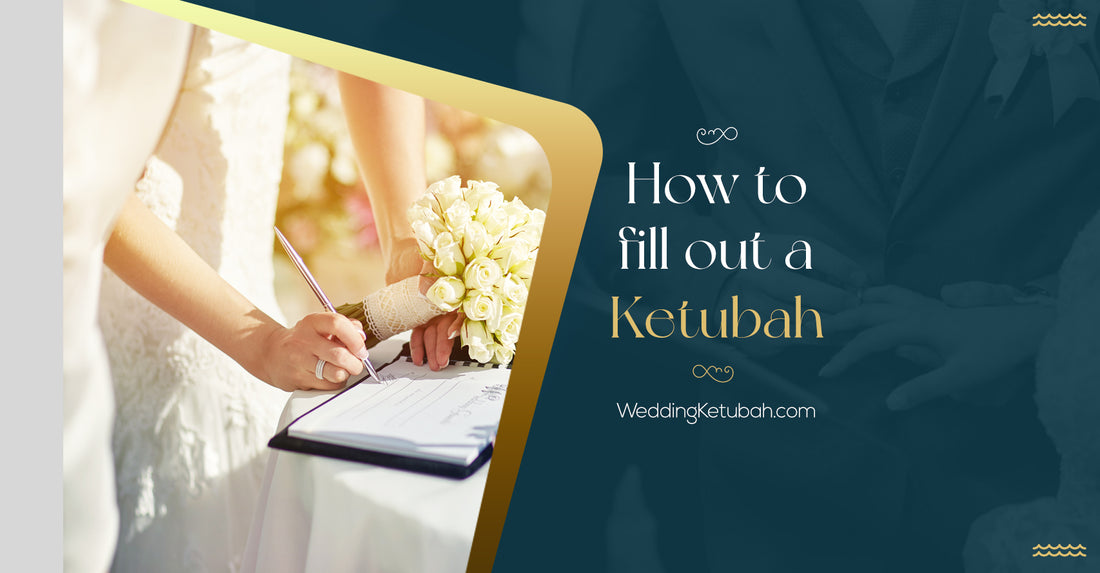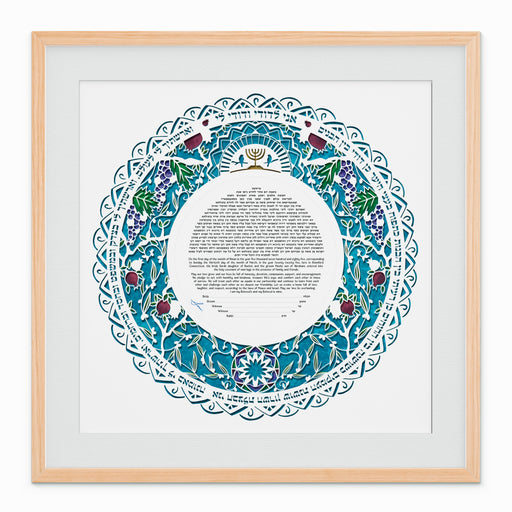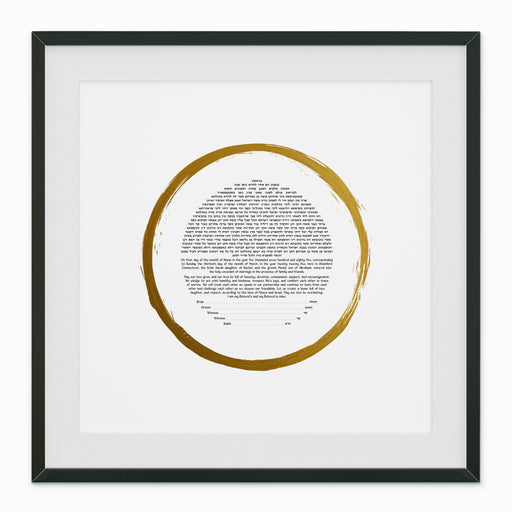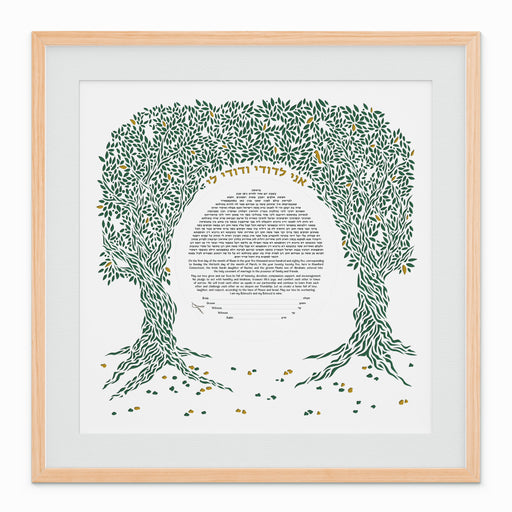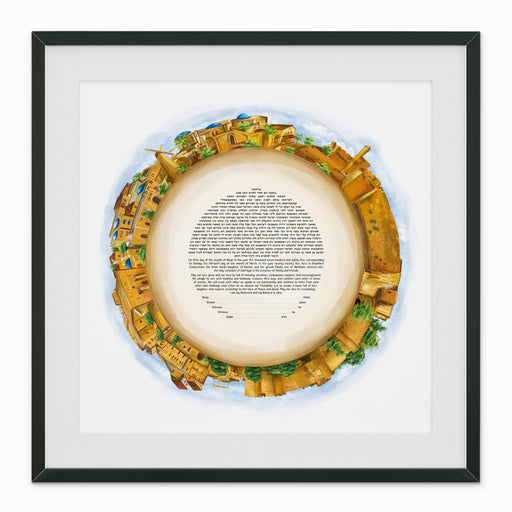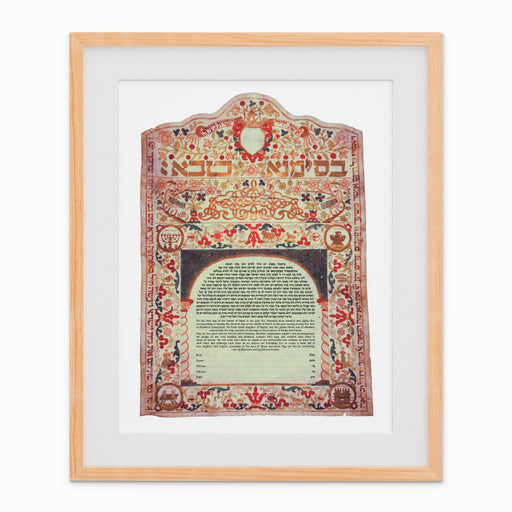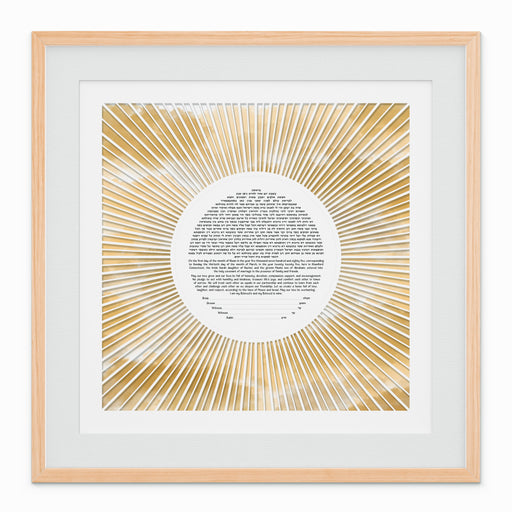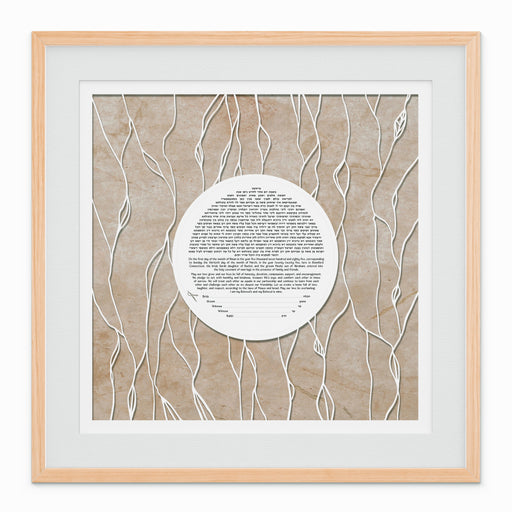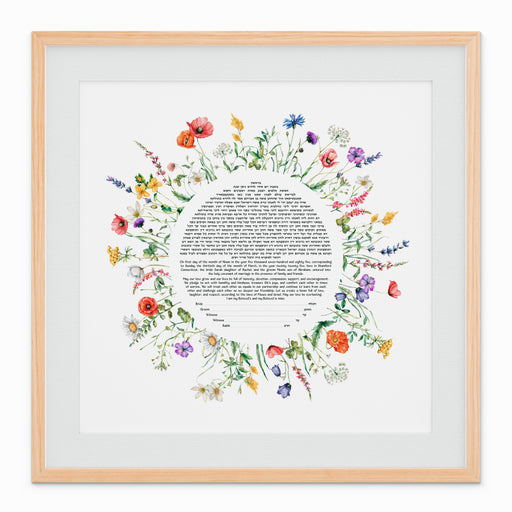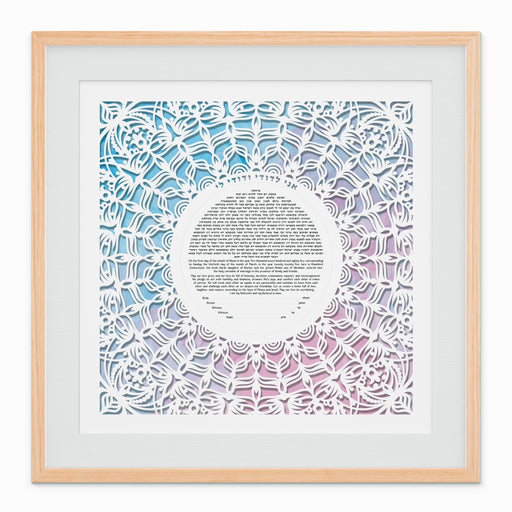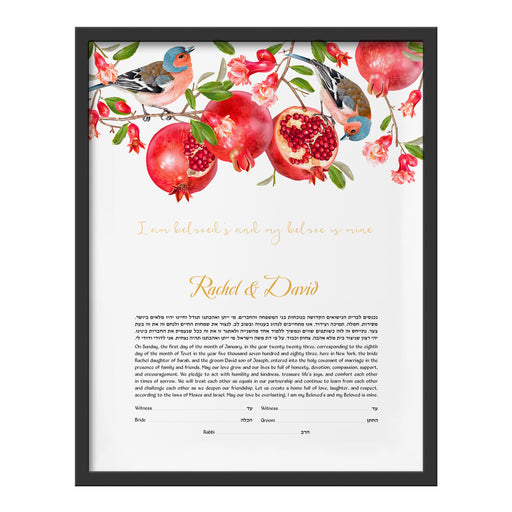Table of Contents:[hide]
By Aviva Gat
A Ketubah is a sacred document required for Jewish couples to get married. As with any legal document, it must be filled out correctly to ensure its validity. Read on for a step-by-step guide on how to fill out your Ketubah to ensure it is kosher and your marriage is legitimate according to Jewish law.
Interested in going back to the basics? First read this article about what is a Jewish Ketubah marriage contract.
Step 1: Choose your Ketubah text
There are multiple different Ketubah versions ranging from traditional to secular and modern. Depending on your religious denomination and your heritage, you can choose from various options to find the one that most speaks to you and your partner. You might choose a text that focuses on Jewish values and tradition or you might prefer a text that focuses on love and partnership.
Here is a brief overview of the different options. For a more in-depth description, read here on how to choose a Ketubah text.
- Orthodox: There are several Orthodox versions ranging from the strictest and most traditional (generally used for Sephardic, Haredi, and American Yeshiva weddings) or the more popular versions from the Rabbinical Council of America or the United Synagogue in the UK.
- Conservative: Conservative texts also focus on tradition, but contain an additional clause that allows the bride to request a divorce.
- Reform: There are multiple reform Ketubah text versions focusing on culturally Jewish values and traditions. Some mention God, while others are more secular.
- Modern: There are modern alternative texts that do not require customization or Hebrew. This type of text acknowledges rich cultural and religious traditions without binding couples to any specific actions or customs. Check out WeddingKetubah.com’s modern alternative text here
- Egalitarian: Egalitarian Ketubahs focus on equality between the bride and groom. They avoid any clauses that suggest the bride is acquired or any unequal obligations.
- Interfaith: Most interfaith couples create their own Ketubah texts that include their vows toward their marriage.
Step 2: Add the date and location
The Ketubah was created as a legal document. As with any legal document, the time and place of its signature are required for its effectiveness.[1]
Date of Ketubah signing
Traditional Ketubahs all start with the date, which is usually the first thing couples choose once they get engaged. The date on the Ketubah is the wedding day, even if the Ketubah is signed on a different date.
The Ketubah must include the day of the week, the day of the month, the month, and the year. It is important to use the Hebrew date, rather than the date according to the Gregorian calendar. If you’re not sure of the Hebrew date of your wedding, ask your rabbi or use an
It’s important to note that according to the Hebrew calendar the date changes at sunset rather than at 12:00 am. If your wedding ceremony is after sunset, you need to use the Hebrew date for the following day. You might want to avoid having a wedding ceremony during sunset because this can cause confusion regarding the effective date and therefore the validity of the Ketubah.
It’s also interesting that while Ketubahs are traditionally written in Aramaic, the date is written in Hebrew.
Place of Ketubah signing
The location is the second thing noted in a Ketubah. This is the location where the Ketubah is signed, even if it is different than the location of the wedding ceremony.[2] You can include the city, state, and even country in your Ketubah.
Step 3: Write the names of the bride and groom, and their parents
A Ketubah includes the Hebrew names of the bride and groom and their parents. The rabbi must take great care to write the names correctly. The Ketubah lists the names as follows:
“the bride _____ daughter of (father) and (mother), and the groom _____son of (father) and (mother).”
Last names are not included. Some couples choose to include middle names. Orthodox Ketubahs do not include the names of the mothers.
What to write on your Ketubah if you do not have a Hebrew name or don’t know how to spell it
Today many secular Jews as well as participants in interfaith marriages may not have a Hebrew name or may not know how to spell it. If you have a Hebrew name but aren’t sure of the spelling, your rabbi will use the common spelling for the Hebrew name.
If you do not have a Hebrew name, you should consult with your rabbi on how to transliterate your name to Hebrew. Your rabbi will be able to write your name (or the name of your parents) phonetically in Hebrew letters.
You SHOULD NOT Hebraicize nor choose a different name for your Ketubah. If you decide you want to adopt a Hebrew name for yourself, you of course may do this, but this is a separate ritual that should take place before using the name for your Ketubah.
Step 4: Determine your vows and obligations
The core of your Ketubah relates to your vows or obligations toward your partner and your marriage. What will be included here depends on your religious affiliation and which type of Ketubah text you choose. If you are using a reform, egalitarian, or interfaith text, this is where you get to write about what is important to you. Here are a few ideas you might want to discuss:
- Your values, whether Jewish or secular
- The way you view your partnership
- A description of the love between you and your partner
- Vows for what you and your partner bring to your marriage
- Your vision of your future family and home
- What you hope for your marriage in the future
If you are Orthodox and using a traditional Ketubah, there are several important things included in this section. To learn more about them, please see our in-depth article about Orthodox Ketubahs.
Step 5: Conclude the document
The ketubah ends with the expression “And everything is valid and confirmed.” This is a Talmudic formula that concludes all Jewish legal documents so nothing can be added after the document is signed.[3]
If you are looking for a more modern Ketubah text, you might choose to end it with the famous quote from the Song of Solomon, 6:3, “I am my beloved and my beloved is mine.” This beautiful quote exemplifies the importance of love and Jewish values and is a great way to conclude your Ketubah.
Step 6: Sign the Ketubah
Once the text of your Ketubah is finalized it must be signed by two witnesses who are not related to the bride or groom. It is a great honor to choose someone to sign your Ketubah, so choose witnesses who are important to you and your partner. When choosing your witnesses, consult with your rabbi and read this article on how to choose your Ketubah witnesses.
Your witnesses can only sign the Ketubah after the “kinyan” ritual has occurred. The kinyan is an ancient tradition in which the husband accepts his rights and obligations according to the Ketubah. Learn more about the kinyan and the entire ceremony for signing the Ketubah here.
It is interesting to note that the Ketubah only needs to be signed by the two witnesses. Signatures from the rabbi or the bride and groom are not required. However, in recent times some couples choose to sign their own Ketubahs as a testament to their commitment to the vows outlined therein. You should discuss with your rabbi who you would like to sign your Ketubah.
Step 7: Present the Ketubah to the bride
Once the document is filled out and signed, it must be presented to the bride. This is done during the wedding ceremony where the Ketubah is usually read aloud and then given to the bride for safe keeping. It is important to note that even though the Ketubah is signed prior to the wedding ceremony, it does not take effect until after the blessings are recited at the wedding and the couple spends time alone together.
Step 8: Safe keep the Ketubah
According to Jewish law, a couple cannot live together unless they have their Ketubah. This means great care must be taken not to lose or misplace the document. Since ancient times, couples have kept their Ketubahs safe by hanging them on the walls of their home. When the document is in plain sight, you will see it daily and avoid any confusion about where it might be years after your wedding ceremony.
You might want an eye-pleasing Ketubah that will match your tastes and the décor of your home. Today there are many artists who make beautiful Ketubahs to serve as a constant reminder of your and your partner’s love and commitment.
Are you looking for an artistic Ketubah to hang on your wall? Here are several great examples
[1] Rabbi Aryeh Kaplan (1983). Made in Heaven. Moznaim Publishing Corporation.
[2] Rabbi Aryeh Kaplan (1983). Made in Heaven. Moznaim Publishing Corporation.
[3] Rabbi Aryeh Kaplan (1983). Made in Heaven. Moznaim Publishing Corporation.
By Aviva Gat
Aviva Gat is a journalist, author, and content writer specializing in various topics including religion, culture, health, & technology. She has a B.S. in Journalism and Religion from Boston University and an M.B.A. from Tel Aviv University.

